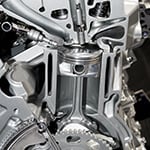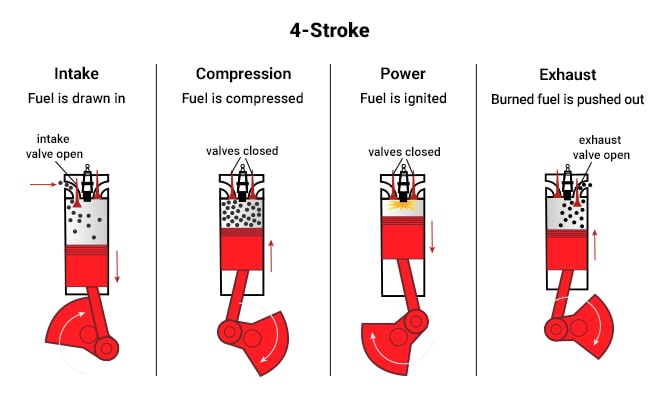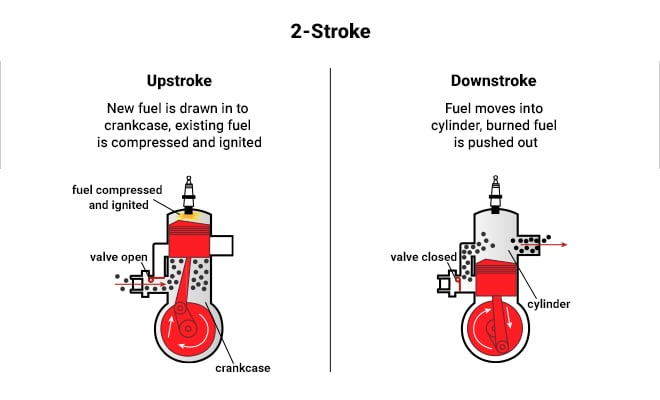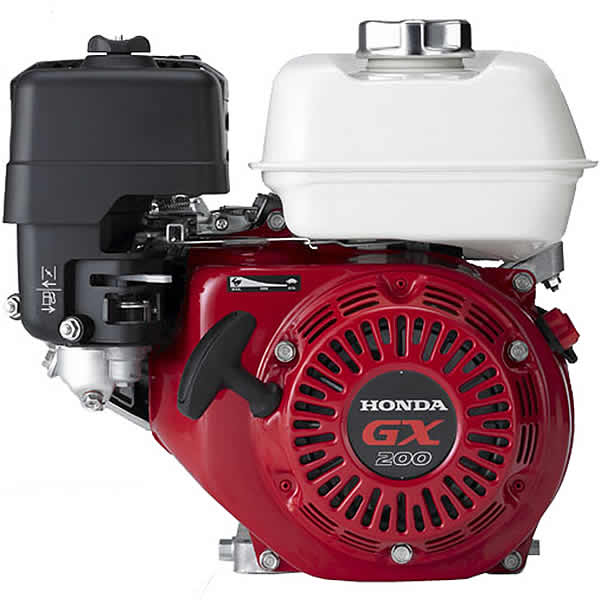
Engine Cycles 101
 Engine strokes or cycles are probably a concept you’ve heard at some point in your life but maybe glossed over. Maybe a mechanic or your car fanatic cousin used terms like “2 cycle engine” or “4-stroke engine,” leaving you scratching your head.
Engine strokes or cycles are probably a concept you’ve heard at some point in your life but maybe glossed over. Maybe a mechanic or your car fanatic cousin used terms like “2 cycle engine” or “4-stroke engine,” leaving you scratching your head.
Cycles and strokes describe how an engine works. The number of strokes or cycles refers to the movement of the piston inside the engine cylinder.
In this guide, we’ll explain the difference between 2-stroke and 4-stroke engines and analyze the pros and cons of each so you can pick the right one for the job.
What Makes 2-Stroke and 4-Stroke Engines Different?
If you’ve read our guide on how small gas engines work, then you know that an engine has intake, compression, power, and exhaust stages.
Engines either accomplish these stages in 2 piston movements (2-strokes) or in 4 piston movements (4-strokes).
4-Stroke Engines
In 4-stroke engines, the piston moves for each stage of the combustion process.

First Stroke: The piston moves down the cylinder as air/fuel enters during the intake stroke.
Second Stroke: The piston moves up the cylinder compressing the air/fuel during the compression stroke.
Third Stroke: The piston moves down the cylinder due to combustion during the power stroke.
Fourth Stroke: The piston moves up the cylinder to expel exhaust gases during the exhaust stroke. When it reaches the top, the intake stroke starts again.
2-Stroke Engines
In 2-stroke engines, the piston only moves twice during the engine cycle.

First Stroke: The piston moves up and draws fresh air, gas and oil into the lower cylinder. At the same time, the piston compresses the air/fuel mixture. This is sometimes called the intake and compression stroke.
Second Stroke: Combustion forces the piston down the cylinder, which also opens the exhaust port to release spent fuel. Incoming fresh fuel pushes the exhaust out the port. This is sometimes called the power and exhaust stroke. When the piston comes back up, the intake and compression stroke starts again.
It’s important to understand that 2-stroke engines cut the number of strokes in half because the piston doubles as an intake and exhaust valve. After combustion forces the piston down, it uncovers the exhaust and intake ports. As the piston reaches the bottom and comes back up, the pressure differential opens a reed valve on the intake port to bring in fresh air/fuel.
Another major difference is in oil lubrication. In 2-stroke engines, oil is distributed with the fuel, lubricating moving parts before entering the combustion chamber. In 4-stroke engines, the oil sits in a separate crankcase and is distributed via an oil slinger or pump.
Two-Cycle vs Four-Cycle?
Whether or not a 2-stroke or 4-stroke engine is better depends on the application and what your priorities are. We’ll compare fuel efficiency, power, usability, pollution, and noise.
 | 2-Stroke Engine | 4-Stroke Engine |
|---|---|---|
| Fuel Consumption | Uses More Gas | Uses Less Gas |
| Weight | Lighter | Heavier |
| Noise | Louder | Quieter |
| Power | Higher Speed/Lower Torque | Higher Torque/Lower Speed |
| Emissions | More Pollutants | Fewer Pollutants |
| Maintenance | Simpler to Maintain | Harder to Maintain |
| Applications | Lightweight/ | Heavy-Duty Work Equipment |
Fuel Efficiency
Fuel efficiency is higher in 4-cycle engines. In a 2-cycle engine, fuel is lost during the intake and compression stroke because, for a moment, both the intake and exhaust ports are open. This means some fresh, unused fuel escapes out the exhaust port.
In 4-stroke engines, valves control intake and exhaust. When the intake valve is open, the exhaust valve is closed, preventing wasted fuel.
Power
 Power varies from 2-stroke to 4-stroke engines. For high revolutions per minute (RPM) of 8,000-14,000, a 2-stroke is the way to go because it completes a rotation in half the time of a 4-stroke.
Power varies from 2-stroke to 4-stroke engines. For high revolutions per minute (RPM) of 8,000-14,000, a 2-stroke is the way to go because it completes a rotation in half the time of a 4-stroke.
These high speeds are perfect for equipment like chainsaws and string trimmers where you need a fast blade to be effective.
The downside of 2-stroke engines is their lower torque capability which would become painfully apparent if you tried mowing a thick, wet lawn with a 2-stroke lawnmower—you’d be out there a while.
In 4-stroke engines, the opposite is true. RPMs of less than 4,000 would make cutting wood a chore, while high torque is perfect for heavy applications like lawnmowers or your car.
Usability
 When it comes to short-term usability, 2-stroke engines take the cake. For one, they are able to operate 360 degrees. That's the perfect maneuverability for trimmers or leafblowers where you're working at weird angles.
When it comes to short-term usability, 2-stroke engines take the cake. For one, they are able to operate 360 degrees. That's the perfect maneuverability for trimmers or leafblowers where you're working at weird angles.
Due to fewer moving parts, 2-cycle engines also weigh less than their 4-cycle counterparts, which translates to lighter equipment, easier maintenance, and lower overall costs.
Where 4-stroke engines win out is in long-term performance and longevity. Although 2-stroke engines are easier to maintain, they run hotter and take much more abuse. Also, their oil lubrication isn't as thorough as that of 4-stroke engines.
Noise & Pollution
There's a reason that the noise a string trimmer makes is more annoying than a lawnmower. The 2-cycle engine inside the trimmer runs loud at 85-110 decibels because of its higher RPMs. Compare that to a 4-cycle engine that runs at 65-80 decibels.
Pollution is also worse in 2-stroke engines because some of the oil is burned and exhausted. Remember, the oil enters the cylinder with the air and fuel, unlike in a 4-stroke engine.
The Bottom Line
Small lawn and garden equipment and some marine engines favor 2-cycle engines due to their high RPMs and maneuverability, although 4-cycle options are increasingly becoming available. Heavier equipment like lawnmowers and log splitters overwhelmingly favor 4-stroke engines for higher torque and reliability.
Both types of engines have their purpose, and understanding the basics will help you better use your equipment. At the least, you'll be able to keep up with that engine-obsessed cousin of yours.
![]() NEXT: How to Start and Break-In a Small Engine
NEXT: How to Start and Break-In a Small Engine

